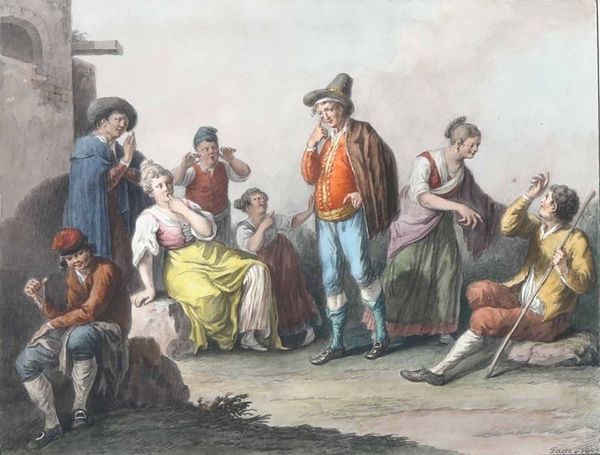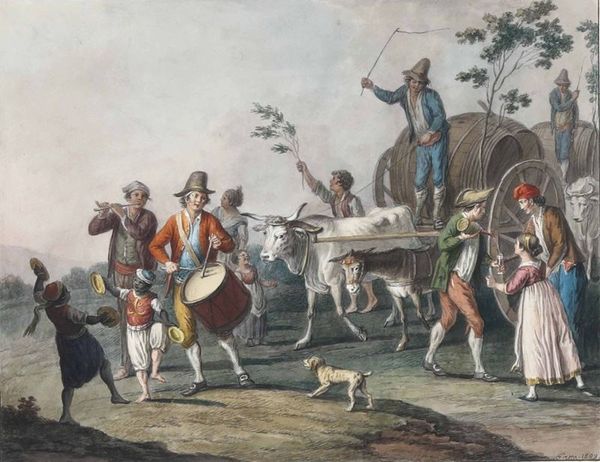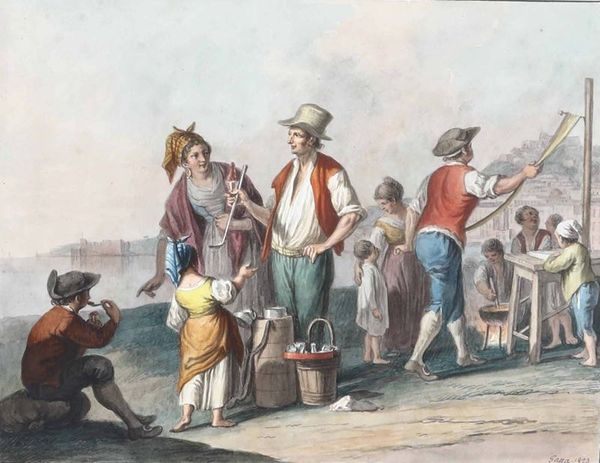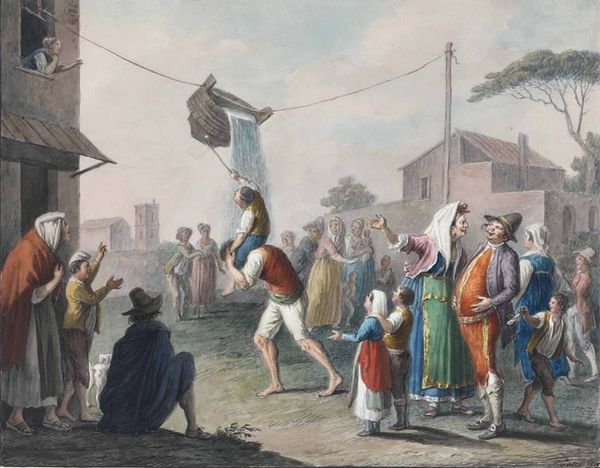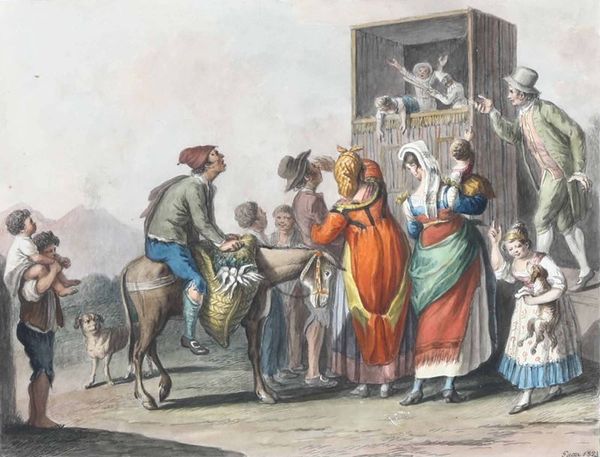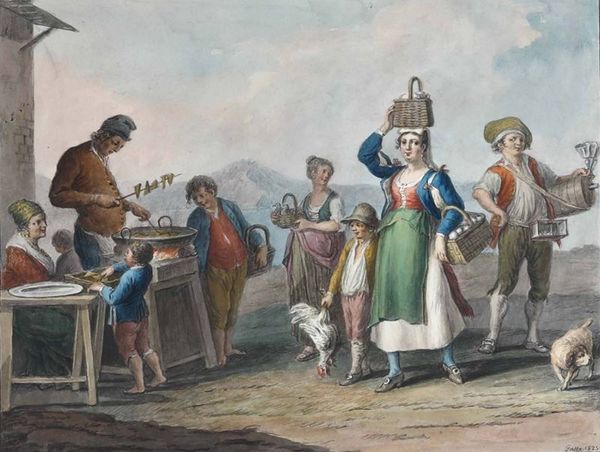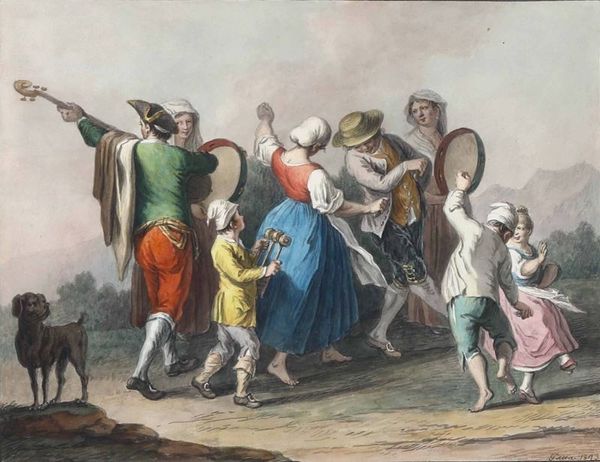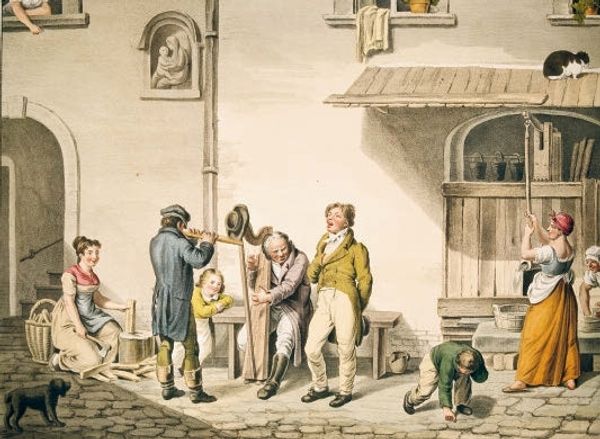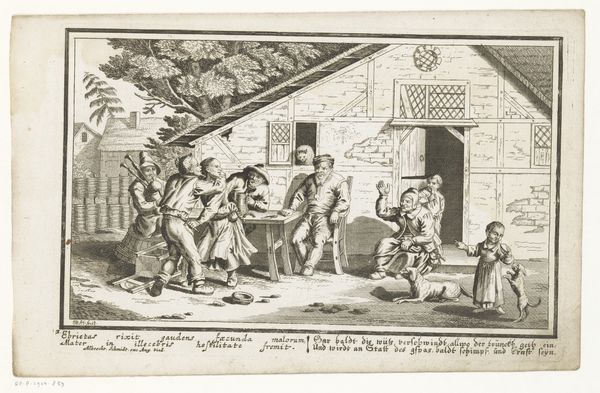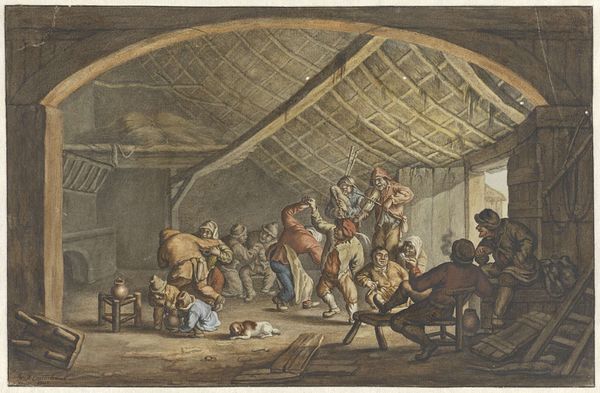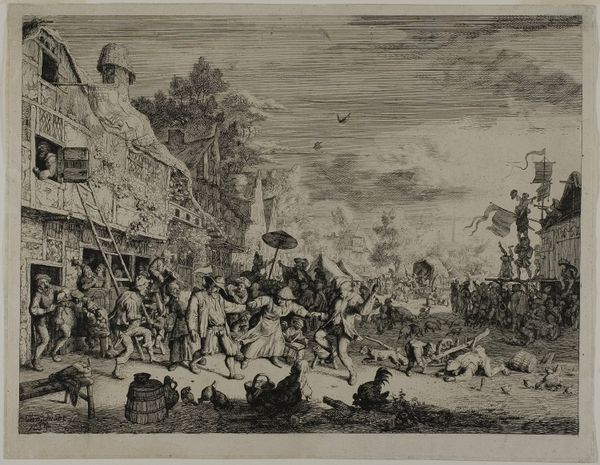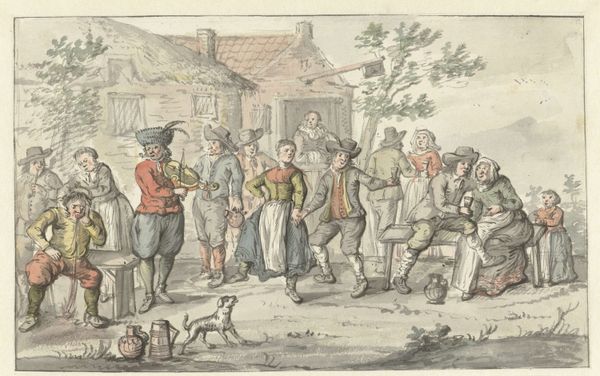
watercolor
#
narrative-art
#
figuration
#
watercolor
#
romanticism
#
watercolour illustration
#
genre-painting
#
academic-art
Dimensions: 20 x 26 cm
Copyright: Public domain
Editor: Saverio della Gatta’s "Group of various Neapolitan mutoloparlant gestures," made with watercolor in 1825, is striking! The figures, frozen in animated gestures, have an intriguing performative quality. What do you make of the piece? Curator: It is a fantastic example of Romanticism, deeply embedded in the social context of 19th-century Naples. Consider these 'mutoloparlant' gestures not just as quaint folklore, but as a sophisticated, codified language, maybe even a subversive form of communication among certain social strata excluded from formal power. Editor: Subversive, how so? Curator: Well, think about who is being depicted. They appear to be common folk. Could this elaborate system of gestures be a way for marginalized groups to communicate freely, outside the surveillance of the ruling class? Are they challenging the dominant discourse? Editor: That’s fascinating! So, it’s more than just people chatting; it's potentially a commentary on class and communication. But does the artist have a political intention, or is the goal a record of customs? Curator: That's the exciting question, isn't it? Della Gatta might be both documenting and subtly commenting. He invites us to decode these gestures, pushing us to think about how meaning is constructed, negotiated, and potentially weaponized within society. What's your interpretation now, considering the work's potential subversive layer? Editor: I see it with fresh eyes now. It's not just a scene; it is a complex, coded narrative about power, identity, and voice, or rather, the lack thereof. Curator: Exactly! It compels us to analyze historical representations, to examine the relationship between the represented and their real-world context, and encourages us to engage critically with social dynamics as recorded in the past. It feels pertinent even now!
Comments
No comments
Be the first to comment and join the conversation on the ultimate creative platform.
